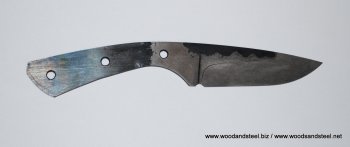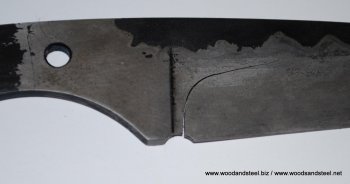Mike Martinez
Well-Known Member
So, tonight I heat treated 6 knives successfully and would you know, the lucky number seven wasn't so lucky. Four were O-1 and three were 1084 from Aldo. This batch was full of firsts for me... mainly the first set of knives were I didn't use any type of jig at all. No jig for plunge lines or anything else. Anyway, everything was going well until the last knife... the one that I wanted the most (funny how that works out, right?).
Anyway, it survived the quench and made it to my staging area to await tempering when I heard that dreadful TINK! I'm sure that the stress riser at the ricasso had much to do with it, but I'm not quite sure why it waited so long to split. The hammon even looks like it was going to turn out well. For what its worth, here are some photos...


Anyway, it survived the quench and made it to my staging area to await tempering when I heard that dreadful TINK! I'm sure that the stress riser at the ricasso had much to do with it, but I'm not quite sure why it waited so long to split. The hammon even looks like it was going to turn out well. For what its worth, here are some photos...


